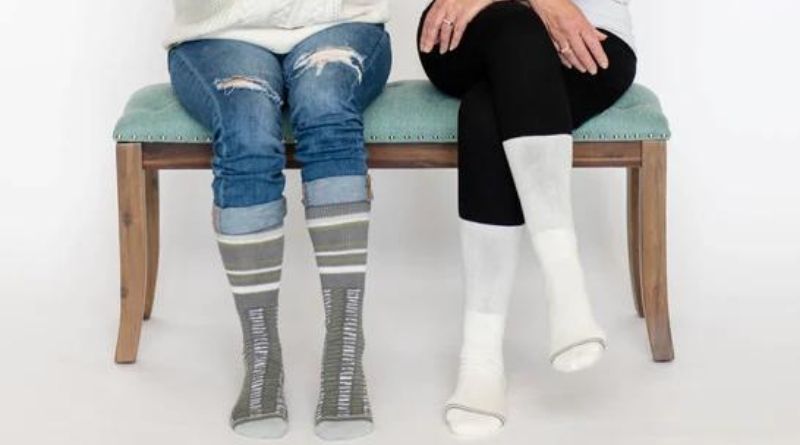Choosing the right type of socks is more than just a matter of comfort; it’s a crucial aspect of foot care, especially for those with specific health needs such as diabetes. In this article, we will explore the fundamental differences between regular socks and diabetic socks, shedding light on how each type caters to varying requirements. This knowledge is vital, not just for individuals with diabetes, but for anyone interested in maintaining optimal foot health.
Table of Contents
Understanding Regular Socks
Composition and Design
Regular socks, designed for the general population, come in a variety of materials like cotton, wool, nylon, and polyester. These materials strike a balance between comfort, durability, and the ability to wick away moisture. Available in various lengths and styles, regular socks often feature elastic bands to ensure a snug fit.
Intended Use and Benefits
The main aim of regular socks is to provide everyday comfort. They help reduce friction between our feet and shoes, and absorb sweat, making them ideal for daily activities, including work and leisure. However, regular socks may not meet the specific medical needs of those with diabetes.
Exploring Diabetic Socks
Specialized Features
Diabetic socks are a game-changer for those with diabetes or similar foot health concerns. Made from finer, softer fabrics like bamboo, wool, or synthetic blends, these socks are designed to be gentle on sensitive skin and keep feet dry. Their non-binding tops are a key feature, promoting better blood circulation and avoiding constriction.
Health Benefits and Importance
For someone with diabetes, foot care is paramount. Diabetic socks help prevent injuries and complications like ulcers and infections. Their seamless design and moisture-wicking abilities are essential in protecting sensitive feet from blisters and fungal infections.
Comparing Regular and Diabetic Socks
Material Differences
While regular socks are often made from less expensive, standard materials, diabetic socks prioritize high-quality, softer fabrics to minimize irritation and injury risks. The material choice in diabetic socks is a critical factor in maintaining foot health.
Design and Comfort
Diabetic socks stand out with their unique design features, such as non-elastic binding, minimal seams, and sometimes padded soles for extra comfort. These elements are specifically tailored to minimize foot injuries, a serious concern for diabetics.
Choosing the Right Socks for Diabetics
What to Look for in Diabetic Socks
When shopping for diabetic socks, look for soft, breathable fabrics, non-binding tops, minimal seams, and moisture-wicking properties. Proper sizing and fit are also crucial to ensure they are effective and comfortable.
Common Misconceptions and Mistakes
A widespread misconception is that diabetic socks are only necessary for those with severe diabetes complications. In reality, they are beneficial for all diabetics as a preventative measure. Choosing the wrong type of socks can lead to significant foot problems.
Impact of Sock Choice on Foot Health
Long-term Benefits
Consistently wearing the right type of socks, particularly for diabetics, can have a profound impact on foot health over time. It’s an easy yet effective way to prevent complications like ulcers and infections.
Risks of Improper Sock Selection
For individuals with diabetes, the wrong socks can lead to serious issues, including infections and ulcers, and in extreme cases, even amputation. The importance of proper sock selection cannot be overstated in maintaining foot health.
Conclusion
Understanding the differences between regular and diabetic socks is key to making informed choices for foot care. While regular socks offer basic comfort and protection, diabetic socks provide specialized features for those with diabetes. Making the right sock choice is a simple, yet crucial, step towards good foot health, particularly for diabetics.
